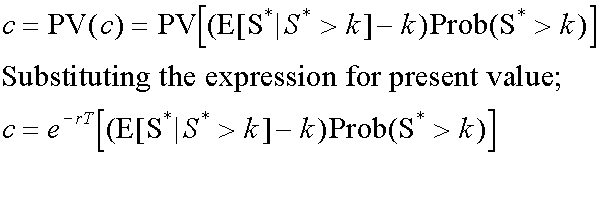WWWFinance Futures Campbell
Post on: 26 Июнь, 2015 No Comment

Hedging with Futures
More on Hedging with Financial Futures
As an introduction to hedging, let’s consider some examples. First, consider the hedging of the Ginnie Mae (GMNA). Because we are holding the Ginnie Mae security long, the hedge is set up to sell a combination of T-Bonds and Euros that will provide offsetting cash flows. If interest rates go up, the Ginnie Mae price goes down and we incur losses in the cash position. Because we are shorting the T-Bond and Euros, money is transferred into our account as the price of these instruments heads down. We observe that the price—yield function for the Ginnie Maes could be concave at some points. This provides a considerable complication to our hedged position. Consider the situation in early 1986. The investment bankers that had set up hedged positions lost a huge amount of money because of imperfect hedges. The estimated losses were $500 million and some large houses lost over $100 million in a few days.
What exactly happened? The investment bankers were using T-Bonds and short term interest rate futures to hedge their holdings of mortgage backed securities. In the first part of 1986, interest rates dropped considerably. As interest rates drop, bond prices go up. So the firms were taking losses on their short futures position. Usually, with a hedged position, the losses on the short position are offset by gains in the financial instrument that you are holding. That is, if I was holding a corporate bond, as interest rates went down the bond price would go up and there would be gains in the cash position that offset the losses in the short position. With the mortgage backed securities, this did not occur. As rates dropped, people began to prepay their mortgages. Mortgage holders were exercising their call option with the exercise price of the par value of the mortgage plus the prepayment fee. As a result, the duration of the mortgage backed securities dropped and the price did not go up and in some cases the prices actually fell. So the investment bankers were faced with losses on the futures and losses in the cash. This is why Wall Street took such a bath in early 1986.
It happened again in 1994, when interest rates rose sharply. Mortgage holders slowed down the rate at which they prepaid their mortgages. Bonds lose value as rates go up, because the cash flows are discounted at a higher rate. Mortgage backed securities lose value at an even faster rate, since cash flows from expected prepayments are pushed back. In early 1994, Kidder Peabody & Co had $16 billion worth of mortgage backed securities in their inventory which were not hedged properly. This contributed to the demise of the firm, which was sold at the end of the year.
Some Hedging Examples
Short Hedges (1)
The purpose of the short hedge is to offset risk in a cash position. Consider the case of a bank with a $500 million holding of government securities. It is January 1, 1996. The bank investment committee expects a rise in the yield on government bonds within the next two months and a leveling off thereafter. That is, the investment committee expects a capital loss on the bank holdings of the government bonds (a rise in interest rates causes the bond prices to drop). You have recently been hired into the finance group. Your job is to set up a hedge.
To simplify this example, suppose the bank is holding 8% Treasury bonds with 20 years to maturity. The going rate in the market is 8.2%. So the bonds are worth approximately par value. The hedge will involve agreeing to sell Treasury bonds in the future. You call up your broker and sell 5000 March T-Bond contracts on the Chicago Board of Trade. The face value of the contract is
5000 x $100,000=$500,000,000.

Since the going rate in the market is close to the coupon on the underlying asset, the futures are trading close to par.
The next step is to follow the daily cash flows. If the bank’s investment committee is correct and the rates go up, the value of the bonds that the bank holds will go down. At the same time on the futures side, you will be making money. As the rates go up, the settlement prices on the T-Bond futures will go down. Money will be transferred into your account. This money will help offset the losses on the cash market.
Since the investment committee believes that the rates will level off by March, you should execute a reversing trade in March — or deliver your bonds. Since the bank wants to keep the Treasury bonds, buy 5000 March T-Bond contracts on March 1, 1996.
This was a very simple example. The hedge worked quite well because we were holding an instrument that was assumed to be the deliverable instrument. Note the T-Bond futures contract is a very good hedge against 8% 20 year bonds, it is not as good for other coupons. If the bank was holding $500 million in corporate bonds, the quality of the hedge would be determined by the correlation between changes in corporate yields and changes in the Treasury yields.
The last thing to realize is that if the rates went down, then you would make money on the cash side. Those gains, however, would be wiped out by losses on the futures side. So the hedge reduces both the downside and upside potential for your investment. Many portfolio managers do not use interest rate futures because of the limitation on the upside. Those managers that do use futures do not necessarily hedge 100% of the exposed assets like we did in this example. If you hedge 50% of your asset base, you cut the downside risk but still leave some upside potential.














